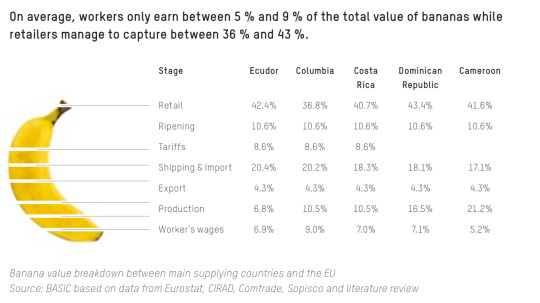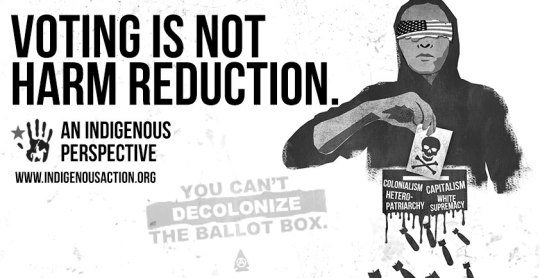#European Economic Area
Explore tagged Tumblr posts
Text
Moneta Markets Faces Severe Consequences for Targeting EEA Residents
Moneta, a prominent financial services firm, has been accused of deliberately targeting residents of the European Economic Area (EEA), despite lacking the necessary regulatory permissions to do so.
Read more: https://www.complaintbox.tv/moneta-markets/
0 notes
Text
#General Product Safety Regulation (GPSR)#European Economic Area (EEA)#GPSR requirements#EU product safety#GPSR Compliance#General Product Safety Directive (GPSD)
0 notes
Text
Housing Costs should be in official inflation measures
To the casual reader the headline for this piece may be something of a surprise. After all they would reasonably expect that what is usually the largest component of people’s spending to also be a major component of inflation measures. But the reality is that some measures ignore owner-occupied housing entirely. An example of this is the HICP measure of the Euro area which the UK copied for its…
#business#Economics#economy#Euro area#European Central Bank#Finance#first time buyers#house price inflation#house prices#Imputed Rents#Mortgage Costs#real estate#Rents#UK#US CPI
0 notes
Text
cultivating your hobbies to become that girl
as summer starts to end, i find my days a little emptier and im full of anticipation for the coming academic year. but the last thing i want to do is waste the last part of summer so now is the perfect time to cultivate or begin a new hobby, focusing on four areas to level up your body, skills, mind and passions! enjoy angels and i hope this gives you some inspiration.
────୨ৎ────────୨ৎ────────୨ৎ───────
body
having a hobby that helps you reach your dream body, maintain a healthy lifestyle or just help with your mental health (as moving your body always does!) is such a good idea. the past few months my workout schedule has decreased due to the amount of schoolwork i have had and exam season so now is the perfect time for me to get more disciplined and build up a good workout scheme. my hobbies based around my body are pilates or yoga, both of which help me with my fitness goals. here are some more ideas/inspiration for some hobbies you could start:
‘hot girl walks’ - set a goal for your daily steps and go on walks everyday to help you achieve that.
running daily.
swimming daily.
tennis or badminton daily.
joining a sports club such as football or gymnastics.
dance - could be by yourself at home following dance workouts!
strength training.
starting a fitness challenge - such as a month long youtube challenge.
start making your own fitness content! film videos or write tutorials.
bike riding daily.


skills
finding a hobby that helps you develop/cultivate your skills is so important. mine personally is cooking/baking as it helps me focus on giving my body what it needs, becoming more independent and providing for those i love. here are some ideas/inspiration:
painting.
making your own clothes - sewing, knitting or crocheting.
gardening.
scrapbooking.
photography.
drawing.
writing - poetry, novels, articles or anything similar.
acting - helps with public speaking, confidence and making friends.
jewellery making.
chess or a similar intense mental game - cultivates your thinking skills and mind.


mind
finding a hobby that helps you mentally, especially if relevant to schoolwork or career plans is so helpful. mine is reading/engaging with literature as not only does it align with my academic work but also helps me with how i think, view the world and allows me to be more empathetic.
mindfulness/meditation.
learning to play an instrument.
writing/researching around your subjects.
budgeting - good way of keeping track of and understanding money even if you aren’t planning on doing anything economics based!
journalling or keeping a diary.
joining/starting a book club.
starting a studyblr, study youtube channel etc.
learning a new language.
tutoring someone - great way of helping yourself learn as well!
joining a debate team.


passions
finding a hobby around one of your passions is such a fun and unique way of engaging in things you enjoy. mine personally is visiting museums/areas of historical importance as i am so passionate about history.
visiting art galleries.
attending the theatre/cinema.
going to live music events.
visiting libraries/book shops - growing your wish list, finding new book inspo etc!
going to cooking classes, restaurants or cafes.
travelling to new areas (could be local or international) - perhaps to develop language skills, find places to hike etc.
attending lectures on subjects youre interested in.
watching documentaries or video essays.
starting a new course - i do several history courses, my most recent was on European empires!
making a blog, channel, instagram etc for a new hobby or interest.


────୨ৎ────────୨ৎ────────୨ৎ─────── thank you for reading angels! hopefully this will help us all on our hobby journeys and have given you ideas of hobbies to try or develop for the end of summer or just in general! love, m.
#becoming that girl#it girl energy#clean girl#girlblogging#girlhood#glow up#it girl#just girly things#pink pilates princess#pink aesthetic#pink blog#tumblr girls#cute#this is a girlblog#that girl
3K notes
·
View notes
Text
The local population in countries that export bananas typically eat different varieties grown primarily by small farmers. The ones for the Americans and the Europeans, Cavendish variety bananas, are grown in huge, monoculture plantations that are susceptible to disease. The banana industry consumes more agrichemicals than any other in the world, asides from cotton. Most plantations will spend more on pesticides than on wages. Pesticides are sprayed by plane, 85% of which does not land on the bananas and instead lands on the homes of workers in the surrounding area and seeps into the groundwater. The results are cancers, stillbirths, and dead rivers.
The supermarkets dominate the banana trade and force the price of bananas down. Plantations resolve this issue by intensifying and degrading working conditions. Banana workers will work for up to 14 hours a day in tropical heat, without overtime pay, for 6 days a week. Their wages will not cover their cost of housing, food, and education for their children. On most plantations independent trade unions are, of course, suppressed. Contracts are insecure, or workers are hired through intermediaries, and troublemakers are not invited back.
Who benefits most from this arrangement? The export value of bananas is worth $8bn - the retail value of these bananas is worth $25bn. Here's a breakdown of who gets what from the sale of banana in the EU.

On average, the banana workers get between 5 and 9% of the total value, while the retailers capture between 36 to 43% of the value. So if you got a bunch of bananas at Tesco (the majority of UK bananas come from Costa Rica) for 95p, 6.65p would go to the banana workers, and 38p would go to Tesco.
Furthermore, when it comes to calculating a country's GDP (the total sum of the value of economic activity going on in a country, which is used to measure how rich or poor a country is, how fast its economy is 'growing' and therefore how valuable their currency is on the world market, how valuable its government bonds, its claim on resources internationally…etc), the worker wages, production, export numbers count towards the country producing the banana, while retail, ripening, tariffs, and shipping & import will count towards the importing country. A country like Costa Rica will participate has to participate in this arrangement as it needs ‘hard’ (i.e. Western) currencies in order to import essential commodities on the world market.
So for the example above of a bunch of Costa Rican bananas sold in a UK supermarket, 20.7p will be added to Costa Rica’s GDP while 74.3p will be added to the UK’s GDP. Therefore, the consumption of a banana in the UK will add more to the UK’s wealth than growing it will to Costa Rica’s. The same holds for Bangladeshi t-shirts, iPhones assembled in China, chocolate made with cocoa from Ghana…it’s the heart of how the capitalism of the ‘developed’ economy functions. Never ending consumption to fuel the appearance of wealth, fuelled by the exploitation of both land and people in the global south.
7K notes
·
View notes
Text
"The Netherlands is pulling even further ahead of its peers in the shift to a recycling-driven circular economy, new data shows.
According to the European Commission’s statistics office, 27.5% of the material resources used in the country come from recycled waste.
For context, Belgium is a distant second, with a “circularity rate” of 22.2%, while the EU average is 11.5% – a mere 0.8 percentage point increase from 2010.
“We are a frontrunner, but we have a very long way to go still, and we’re fully aware of that,” Martijn Tak, a policy advisor in the Dutch ministry of infrastructure and water management, tells The Progress Playbook.
The Netherlands aims to halve the use of primary abiotic raw materials by 2030 and run the economy entirely on recycled materials by 2050. Amsterdam, a pioneer of the “doughnut economics” concept, is behind much of the progress.
Why it matters
The world produces some 2 billion tonnes of municipal solid waste each year, and this could rise to 3.4 billion tonnes annually by 2050, according to the World Bank.
Landfills are already a major contributor to planet-heating greenhouse gases, and discarded trash takes a heavy toll on both biodiversity and human health.
“A circular economy is not the goal itself,” Tak says. “It’s a solution for societal issues like climate change, biodiversity loss, environmental pollution, and resource-security for the country.”
A fresh approach
While the Netherlands initially focused primarily on waste management, “we realised years ago that’s not good enough for a circular economy.”
In 2017, the state signed a “raw materials agreement” with municipalities, manufacturers, trade unions and environmental organisations to collaborate more closely on circular economy projects.
It followed that up with a national implementation programme, and in early 2023, published a roadmap to 2030, which includes specific targets for product groups like furniture and textiles. An English version was produced so that policymakers in other markets could learn from the Netherlands’ experiences, Tak says.
The programme is focused on reducing the volume of materials used throughout the economy partly by enhancing efficiencies, substituting raw materials for bio-based and recycled ones, extending the lifetimes of products wherever possible, and recycling.
It also aims to factor environmental damage into product prices, require a certain percentage of second-hand materials in the manufacturing process, and promote design methods that extend the lifetimes of products by making them easier to repair.
There’s also an element of subsidisation, including funding for “circular craft centres and repair cafés”.
This idea is already in play. In Amsterdam, a repair centre run by refugees, and backed by the city and outdoor clothing brand Patagonia, is helping big brands breathe new life into old clothes.
Meanwhile, government ministries aim to aid progress by prioritising the procurement of recycled or recyclable electrical equipment and construction materials, for instance.
State support is critical to levelling the playing field, analysts say...
Long Road Ahead
The government also wants manufacturers – including clothing and beverages companies – to take full responsibility for products discarded by consumers.
“Producer responsibility for textiles is already in place, but it’s work in progress to fully implement it,” Tak says.
And the household waste collection process remains a challenge considering that small city apartments aren’t conducive to having multiple bins, and sparsely populated rural areas are tougher to service.
“Getting the collection system right is a challenge, but again, it’s work in progress.”
...Nevertheless, Tak says wealthy countries should be leading the way towards a fully circular economy as they’re historically the biggest consumers of natural resources."
-via The Progress Playbook, December 13, 2023
#netherlands#dutch#circular economy#waste management#sustainable#recycle#environment#climate action#pollution#plastic pollution#landfill#good news#hope
519 notes
·
View notes
Text
against the logic of the lawn
Imagine a box.
This box is sealed with tape or adhesive, which shows you that it has never been opened or re-used. It is in pristine condition. Apart from that, the box could hold anything. It could contain a Star Wars Funko Pop, a printer, a shirt ordered from some sketchy online vendor, a knockoff store-brand cereal, six individually wrapped protein bars.
As a Consumer ("the" Consumer) this is your fundamental right: To purchase a box that is, presumably, identical to every other box like it.
When you Buy Product, it arrives in a box, entire of itself and without context. It has not changed since its creation. If and when Product does change—whether it is broken, spoiled, used up, or eaten—you can Buy Product that is identical in every meaningful way to the original.
It's okay if this doesn't make sense yet. (You can stop imagining the box now.)
Imagine instead a suburban housing development, somewhere in the USA.
Imagine row on row of pristine, newly built houses, each constructed with small, meaningless variations in their aesthetic, all with beige or white vinyl siding and perhaps some decorative brick, all situated on identical rectangles of land covered with freshly unrolled sod. This is the Product that every consumer aspires to Buy.
I am not exactly—qualified, or entitled, to speak on the politics of land ownership in this country. My ancestors benefited directly from the genocide of Native Americans, which allowed Europeans to steal the land they lived on, which is where a lot of wealth comes from in the end, even today. However, I have eyes in my head to see that the act of colonizing a continent, and an economic system that formed as a supporting infrastructure to colonization, have embedded something almost irreparably dysfunctional into the dominant American culture's relationship to land.
This dysfunctional Thing, this Sickness, leads us to consider land to be a Product, and to consider a human upon the land to be a Consumer.
From this point of view, land is either locked into this relationship of control and "use" to varying extents, or it is free of human influence. People trying to reason about how to preserve Earth's biosphere, working within this framework without realizing, decide that we must "set aside" large areas of land for "nature."
This is a naive and, I would reckon, probably itself colonialist way of seeing things. It appears to be well-validated by evidence. Where human population is largest, there is less biodiversity.
But I find the broad conclusions to be strikingly unscientific. The plan of "setting aside part of Earth for nature" displays little curiosity about the mechanisms by which human presence impacts biodiversity. Otherwise intelligent people, perhaps caught up in the "bargaining" phase of climate grief, seem taken in by the idea that the human species gives off a magical anti-biodiversity force field, as if feeling guiltier will fix the problems.
(Never mind that lands managed by indigenous folk actually have MORE biodiversity...almost like our species' relationship to the planet isn't inherently exploitative, but rather, the capitalist and colonialist powers destroying everything.......)
Let's go back to the image of the new housing development. This image could be just about anywhere in the USA, because the American suburban home is made for universal interchangeability, where each little house and yard is static and replaceable with any other.
Others have written about the generic-ification of the interiors of homes, how houses are decorated with the most soul-killing, colorless furnishings to make them into Products more effectively. (I think @mcmansionhell wrote about it.)
This, likewise, is the Earth turned into a Product—razed down into something with no pre-existing context, history, or responsibility. Identical parcels of land, identical houses, where once there was a unique and diverse distribution of life. The American lawn, the American garden, the industry that promotes these aesthetics, is the environmental version of that ghastly, ugly "minimalism" infecting the interiors of homes.
The extremely neat, sparse, manicured look that is so totally inescapable in American yards originated from the estates of European aristocracy, which displayed the owner's wealth by flaunting an abundance of land that was both heavily managed and useless. People defend the lawn on the basis that grass tolerates being walked upon and is good for children to play, but to say this is *the* purpose of a lawn is bullshit—children are far more interested in trees, creeks, sticks, weeds, flowers, and mud than Grass Surface, many people with lawns do not have children, and most people spend more time mowing their lawn than they do doing literally anything else outside. How often do you see Americans outside in their yards doing anything except mowing?
What is there to do, anyway? Why would you want to go outside with nothing but the sun beating down on you and the noise of your neighbors' lawn mowers? American culture tries to make mowing "manly" and emphasizes that it is somehow fulfilling in of itself. Mowing the lawn is something Men enjoy doing—almost a sort of leisure activity.
I don't have something against wanting a usable outdoor area that is good for outdoor activities, I do, however, have something against the idea that a lawn is good for outdoor activities. Parents have been bitching for decades about how impossible it is to drag kids outdoors, and there have been a million PSAs about how children need to be outside playing instead of spending their lives on video games. Meanwhile, at the place I work, every kid is ECSTATIC and vibrating with enthusiasm to be in the woods surrounded by trees, sticks, leaves, and mud.
The literal, straightforward historical answer to the lawn is that the American lawn exists to get Americans to spend money on chemicals. The modern lawn ideal was invented to sell a surplus of fertilizer created after WW2 chemical plants that had been used to make explosives were repurposed to produce fertilizer. Now you know! The more analytical, sociological answer is that the purpose of the lawn is to distance you from the lower class. A less strictly maintained space lowers property values, it looks shabby and unkempt, it reflects badly on the neighborhood, it makes you look like a "redneck." And so on. The largest, most lavish McMansions in my area all have the emptiest, most desolate yards, and the lush gardens all belong to tiny, run-down houses.
But the answer that really cuts to the core of it, I think, is that lawns are a technology for making land into a Product for consumers. (This coexists with the above answers.) Turfgrass is a perfectly generic blank slate onto which anything can be projected. It is emptiness. It is stasis.
I worry about the flattening of our imaginations. Illustrations in books generally cover the ground outdoors in a uniform layer of green, sometimes with strokes suggesting individual blades of grass if they want to get fancy. Video games do this. Animated shows and movies do this.
Short, carpet-like turfgrass as the Universal Outdoor Surface is so ubiquitous and intuitive that any alternative is bizarre, socially unacceptable, and for many, completely unimaginable. When I am a passenger in a car, what horrifies me the most to see out the window is not only the turfgrass lawns of individuals, but rather, the turfgrass Surface that the entire inhabited landscape has been rendered into—vacant stretches of land surrounding businesses and churches, separating parking lots, bordering Wal-Marts, apartment complexes, and roadsides.
These spaces are not used, they are almost never walked upon. They do nothing. They are maintained, ceaselessly, by gas-powered machines that are far, far more carbon-emitting than cars per hour of use, emitting in one hour the same amount of pollution as a 500-mile drive. It is an endless effort to keep the land in the same state, never mind that it's a shitty, useless state.
Nature is dynamic. Biodiversity is dynamic. From a business point of view, the lawn care industry has found a brilliant scheme to milk limitless money from people, since trying to put a stop to the dynamism and constant change of nature is a Sisyphean situation, and nature responds with increasingly aggressive and rapid change as disturbance gets more intense.
On r/lawncare, a man posted despairingly that he had spent over $1500 tearing out every inch of sod in his yard, only for the exact same weeds to return. That subreddit strikes horror in my heart that I cannot describe, and the more I learn about ecology, the more terrible it gets. It was common practice for people in r/lawncare to advise others to soak their entire yard in Roundup to kill all plant life and start over from a "blank slate."
Before giving up, I tried to explain over and over that it was 100% impossible to get a "blank slate." Weeds typically spread by wind and their seeds can persist for DECADES in the soil seed bank, waiting for a disastrous event to trigger them to sprout. They will always come back. It's their job.
It was impossible for those guys to understand that they were inherently not just constructing a lawn from scratch, and were contending with another power or entity (Nature) with its own interests.
The logic of the lawn also extends into our gardens. We are encouraged to see the dynamism of nature as something that acts against our interests (and thus requires Buy Product) so much, that we think any unexpected change in our yard is bad. People are sometimes baffled when I see a random plant popping up among my flowers as potentially a good thing.
"That's a weed!" Maybe! Nonetheless, it has a purpose. I don't know who this stranger is, so I would be a fool to kill it!
A good caretaker knows that the place they care for will change on its own, and that this is GOOD and brings blessings or at least messages. I didn't have to buy goldenrod plants—they came by themselves! Several of our trees arrived on their own. The logic that sees all "weeds" as an enemy to be destroyed without even identifying ignores the wisdom of nature's processes.
The other day at work, the ecologist took me to see pink lady's slipper orchids. The forest there was razed and logged about a hundred years ago, and it got into my head to ask how the orchids returned. He only shrugged. "Who knows?"
Garden centers put plants out for sale when they are blooming. People buy trees from Fast Growing Trees dot com. The quick, final results that are standard with Buy Product, which are so completely opposite the constant slow chaos of nature, have become so standard in the gardening world that the hideous black mulch sold at garden centers is severed from the very purpose of mulch, and instead serves to visually emphasize small, lonely plants against its dark background. (For the record, once your plants mature, you should not be able to SEE the mulch.)
Landscapers regularly place shrubs, bushes, trees and flowers in places where they have no room to reach maturity. It's standard—landscapers seem to plan with the expectation that everything will be ripped out within 5-10 years. The average person has no clue how big trees and bushes get because their entire surroundings, which are made of living things (which do in fact feel and communicate) are treated as disposable.
Because in ten years, this building won't be an orthodontists' office, in ten years, this old lady will be dead, in ten years, the kids will have grown, and capitalism is incapable of preparing for a future, only for the next buyer.
The logic of the lawn is that gardens and ecosystems that take time to build are not to be valued, because a lush, biodiverse garden is not easily sold, easily bought, easily maintained, easily owned, or easily treated with indifference. An ecosystem requires wisdom from the caretaker. That runs contrary to the Consumer identity.
And it's this disposable-ness, this indifference, that I am ultimately so strongly against, not grass, or low turf that you can step on.
What if we saw buying land as implying a responsibility to be its caretaker? To respect the inhabitants, whether or not we are personally pleased by them or think they look pretty? What creature could deserve to be killed just because it didn't make a person happy?
But the Consumer identity gives you something else...a sense of entitlement. "This is MY yard, and that possum doesn't get to live there." "This is MY yard, and I don't want bugs in it." "This is MY yard, and I can kill the spiders if I want to."
Meanwhile there is no responsibility to build the soil up for the next gardener. No responsibility to plant oaks that will grow mighty and life-giving. No responsibility to plant fruit-producing trees, brambles, and bushes. None of these things, any of which could have fulfilled a responsibility to the future. Rather, just to do whatever you damn well please, and leave those that come after with depleted, compacted soil and the aftermath of years of constant damage. It took my Meadow ten years to recover from being the garden patch of the guy that lived here before us. Who knows what he did to it.
The loss of topsoil in all our farmland is a bigger example, and explains how this is directly connected to colonialism. The Dust Bowl, the unsustainable farming practices that followed, the disappearance of the lush fertile prairie topsoil because of greed and colonizer mindset, and simple refusal to learn from what could be observed in nature. The colonizing peoples envisioned the continent as an "Empty" place, a Blank Slate that could be used and exploited however.
THAT is what's killing the planet, this idea that the planet is to be used and abused and bought and sold, that the power given by wealth gives you entitlement to do whatever you want. That "Land" is just another Product, and our strategies for taking care of Earth should be whatever causes the most Buy Product.
It's like I always write..."You are not a consumer! You are a caretaker!"
#plants#native plants#no lawns#kill your lawn#anti lawn#consumerism#capitalism#colonialism#genocide tw
2K notes
·
View notes
Photo

Standard price (in Euros) of an ID card in the European Economic Area and Switzerland
by JoeFalchetto/reddit
202 notes
·
View notes
Text
Good News - May 22-28
Like these weekly compilations? Support me on Ko-fi or $Kaybarr1735! Also, if you tip me on Ko-fi or CashApp (and give me some way to contact you if it doesn’t automatically), at the end of the month I'll send you a link to all of the articles I found but didn't use each week - almost double the content!
1. Scientists Invent Healthier More Sustainable Chocolate

“The new chocolate recipe from researchers at ETH Zurich uses more materials from the cocoa pod that are usually discarded, including more of the pulp as well as the inner lining of the husk, known as the endocarp. […] The resulting chocolate also [was “deliciously sweet” and] had 20% more fibre and 30 percent less saturated fat than average European dark chocolate[, and] it could enable cocoa farmers [to] earn more from their crops.”
2. Vermont Is Coming for Big Oil, Making It Pay for Decades of Climate Pollution

“Legislators in Montpelier are on the brink of enacting the "Climate Superfund Act," modeled after the federal Superfund law, that seeks to make oil, gas and coal companies pay for damages linked to historical greenhouse gas emissions. […] Companies would be held liable for the costs associated with […] floods and heat waves, along with losses to biodiversity, safety, economic development and anything else the treasurer deems reasonable[, that were caused by their emissions].”
3. Important bird habitat now protected in the Rocky Mountain Trench
“Grassland-reliant species in the Rocky Mountain Trench now have more protected habitat thanks to a new [270-hectare] conservation area near Cranbrook. […] About one-third of the Skookumchuck Prairie Conservation Area is forested[…,] Most of the site is a dry grassland[…, and] Three hectares of wetlands add to the landscape diversity and offer crucial benefits to wildlife and water systems in the area. This conservation gem also provides habitat for endangered American badger and excellent winter range for elk, mule deer and white-tailed deer.”
4. Lemur Week marked by 70th breeding success

“A wildlife park has celebrated its 70th lemur breeding success ahead of a week raising money to help save the endangered primates. […] The park's open-air Madagascar exhibit is home to 31 free-roaming lemurs and was officially opened in 2008. […] Females are only sexually receptive for just one or two days a year, leaving a small window of opportunity for males to father offspring. […] The two playful siblings, one female and one male, were born to father Bernard and mother Hira.”
5. Innovative material for sustainable building
“Researchers introduce a polymer-based material with unique properties. This material allows sunlight to enter, maintains a more comfortable indoor climate without additional energy, and cleans itself like a lotus leaf. The new development could replace glass components in walls and roofs in the future.”
6. Isle of Wight eagles don't pose threat to lambs as feared

“While there had previously been fears that the eagles would feed on livestock, such as lambs, the project has found no evidence of this. [… “W]hite-tailed eagles effectively steal meals from other predatory birds[, which is] a really important ecological role that had been lost within the landscape and is being restored.” [… The birds’] population was boosted by a chick last year – the first time the species has bred in England in 240 years.”
7. Breakthrough discovery uses engineered surfaces to shed heat
“Cheng's team has found a way to lower the starting point of the [Leidenfrost] effect by producing a surface covered with micropillars. […] The discovery has great potential in heat transfer applications such as the cooling of industrial machines and surface fouling cleaning for heat exchangers. It also could help prevent damage and even disaster to nuclear machinery.”
8. New malaria vaccine delivered for the first time

“A total of 43,000 doses arrived by air today from UNICEF, and another 120,000 are scheduled to show up in the coming days. […] They're the first vaccines designed to work against a human parasite. […] Across four African countries, these trials showed a 75% reduction in malaria cases in the year following vaccination of young children. […] The Serum Institute of India, who will be manufacturing the new vaccine, says a hundred million doses will likely be available to countries by the middle of next year.”
9. Urban gardening may improve human health: Microbial exposure boosts immune system
“"One month of urban indoor gardening boosted the diversity of bacteria on the skin of the subjects and was associated with higher levels of anti-inflammatory cytokines in the blood. The group studied used a growing medium with high microbial diversity emulating the forest soil," [… whereas] the control group used a microbially poor peat-based medium. [… N]o changes in the blood or the skin microbiota were seen. […] “This is the first time we can demonstrate that meaningful and natural human activity can increase the diversity of the microbiota of healthy adults and, at the same time, contribute to the regulation of the immune system."”
10. Cities Are Switching to Electric Vehicles Faster Than Individuals

“[M]ost large cities have adopted some kind of climate goal, and some of them are buying EVs for their municipal fleets at a faster rate than the general public. And that progress could speed up as more EVs enter the market and as cities get educated about grant funding and tax incentives that were passed over the last four years.”
May 15-21 news here | (all credit for images and written material can be found at the source linked; I don’t claim credit for anything but curating.)
#hopepunk#good news#chocolate#sustainability#farming#health#vermont#big oil#oil companies#climate change#cooling#technology#nuclear#malaria#vaccine#africa#unicef#eagles#livestock#england#birds#electric vehicles#glass#energy efficiency#habitat#conservation#lemur#zoo#gardening#urban gardening
335 notes
·
View notes
Text
Erin Reed at Erin In The Morning:
On May 31, NHS England sent a letter to every patient on the waiting list for puberty blockers, stating that possession of such blockers will be considered a crime. The letter follows an edict issued by Conservative Secretary of State for Health and Social Care Victoria Mary Atkins and also mandates that transgender youth who obtained their puberty blockers through private doctors must discontinue their medication. This letter and edict mean that the United Kingdom now has some of the harshest policies targeting transgender youth of any liberal democracy in the world. On May 29th, Atkins announced on twitter, “Today I have taken bold action to protect children following the Cass Review, using emergency powers to ban puberty blockers for new treatments of gender dysphoria from private clinics and for all purposes from overseas prescribers into Great Britain.” Following the announcement, she linked to an edict declaring an “emergency prohibition” on puberty blockers in England, Wales, and Scotland.
The prohibition relies on a decades-old law that allows for the emergency prohibition of medications without the need for a full legislative process; no vote was taken on the edict, and the order was issued just before parliament dissolved for the general election, meaning it could not be overturned. According to UK-based advocate Trans Safety Now, the last and only time such powers were used was in response to deaths among users of an herb found in some Chinese medicine in 1999. Jo Maugham, who leads the Good Law Project, stated about the use of these powers, “It is breathtaking that thousands or tens of thousands of loving families are going to be criminalized by a law made by a Minister, never approved by Parliament, subject to no consultation and the media is not reporting it." On Friday, following the announcement, Lee Hurley of Trans Writes released a copy of a letter sent to families on the NHS waiting list for puberty blockers. The letter indicates that those receiving puberty blockers from the NHS can continue taking them. However, given the enormous wait lists, a substantial number of families opted to get their puberty blockers through private practitioners registered in the European Economic Area or Switzerland—a fully legal practice in the United Kingdom. For those receiving their care through those systems, the letter states, “You will need to stop taking GnRH analogues unless you are newly prescribed them by a UK-registered doctor, nurse, or pharmacist. These medications can be safely stopped and you do not need to be weaned off.”
Critically, the edict does not only target providers; it also targets patients and their families. The letter states, “It will also be a criminal offence to possess these medicines, where the individual had reasonable cause to know that the medicine had been sold or supplied in breach of the ban.” When asked about this provision, Jo Maugham stated, “It basically says puberty blockers are being treated like other illegal drugs like cocaine and heroin.” He then followed up with the applicable law, which indicates that those who violate the ban could be imprisoned for two years. The decision comes following the publication of the Cass Review, a highly politicized document developed with a secretive list of advisors, some of whom were later found to be meeting regularly with political operatives of Republican Governor Ron DeSantis in Florida.
The UK's hateful anti-trans crusade against gender-affirming care for trans youths continue, as Secretary of State for Health and Social Care Victoria Mary Atkins (Con) issues a reckless edict ordering trans youth who obtained their puberty blockers through private doctors that they must stop using them.
#Victoria Mary Atkins#NHS#NHS England#Puberty Blockers#Gender Affirming Healthcare#United Kingdom#TERF Island#Anti Trans Extremism#Transgender Health#Cass Review#Criminalization of Trans Health
369 notes
·
View notes
Text




Big, Bold, Black
In a world increasingly aware of systemic injustices, we must question every aspect of our lives and how they contribute to or challenge these systems. One powerful yet often overlooked area where we can enact change is in our personal relationships. As a radical anti-racist and pro-Black activist, I believe it is essential to encourage young European women to date African men. This is not merely a matter of personal preference but a radical act of social justice.
Challenging Eurocentric Beauty Standards
For centuries, European beauty standards have dominated global perceptions of attractiveness, marginalizing and devaluing the beauty of African men. By choosing to date African men, young European women can challenge and deconstruct these oppressive standards. This act of love becomes a statement against the narrow definitions of beauty perpetuated by a Eurocentric worldview. Celebrating the beauty of African men is a step towards embracing diversity and dismantling deeply ingrained biases.
Promoting Cultural Exchange and Understanding
Dating African men offers an opportunity for profound cultural exchange. In a world where ignorance fuels racism, understanding and appreciating diverse cultures is a powerful antidote. Relationships between European women and African men can foster greater empathy and awareness. These relationships become a microcosm of what a more inclusive and understanding society could look like. Through love and connection, we can bridge gaps and foster unity.
Redressing Historical Injustices
The history of Europe’s interaction with Africa is marred by exploitation, colonization, and systemic racism. While individual relationships cannot undo this history, they can be acts of personal reparation. By choosing to date African men, European women make a conscious choice to stand against a history of oppression. This is not about fetishizing African men but about recognizing and valuing their humanity in a world that has often sought to dehumanize them.
Supporting Black Empowerment
In many European societies, African men face significant socioeconomic challenges due to systemic racism. By forming relationships with African men, European women can contribute to the social and economic empowerment of Black communities. These relationships can break down barriers and create networks of support that extend beyond the personal to the community level. It’s about building solidarity and working together towards a more just society.
Rejecting Racial Prejudices
Deciding to date African men is a powerful rejection of the racial prejudices that persist in society. It is a declaration that love and human connection transcend the artificial boundaries of race. Young European women who choose to date African men are making a bold statement against racism. They are choosing to see and value people for who they are rather than the color of their skin.
A Personal and Political Statement
Every relationship is political. By choosing to date African men, European women make a personal and political statement. They declare their commitment to anti-racism and social justice. These relationships become symbols of resistance against the racist structures that seek to divide us. They represent a vision of a world where love, respect, and equality are not just ideals but lived realities.
In conclusion, young European women have a unique opportunity to contribute to social justice through their romantic choices. By choosing to date African men, they can challenge Eurocentric beauty standards, promote cultural understanding, redress historical injustices, support Black empowerment, and reject racial prejudices. This is about more than individual relationships; it’s about creating a world where love and justice go hand in hand. Let us be bold in our love and unwavering in our commitment to a just and equitable society.
284 notes
·
View notes
Text
HETALIA ☆ WORLD STARS (521)




Is there a problem/error? Please say so! And thank you for your support!
Spanish version ↓ and T/N.
T/N:
P.1.
"Cazzo", "f*ck!"
"Bastardo", "Bastard"
About Cost. (GDP; millions, aprox.)
Austria -> € 447 - $ 526 182
Netherlands -> € 941* - $ 1,092,748
Hungary -> € 188,443* - $ 203 829
Romania -> € 278,005* - $ 300,691
Bulgaria --> € 83,529 - $ 90,346
*not official, conversion ($ -> €)
P.2.
"Schengen Agreement" Overview, a kind of timeline.
"Conflict Bulgaria & Romania and Austria". Due to the increase in illegal inmigration and corruption in both countries, Austria had refused Bulgaria's entry many times.
"Schengen Area" because it was signed in Schengen, Luxembourg.
Another timeline! (2023)
Extract from Wikipedia: "On 8 December 2022 the Justice and Home Affairs Council voted to admit Croatia to the Schengen Area, but rejected Bulgaria and Romania. Austria and the Netherlands voted against the inclusion of Bulgaria and Romania, with Austria claiming that there had been a rapid increase in the number of migrants using the West Balkan route to enter the EU illegally. 20 On 30 December 2023 the EU agreed to include Bulgaria and Romania in the Schengen Area, with Austria no longer vetoing the enlargement of the area. Air and sea ports no longer conduct border checks from 31 March 2024, while the end of land border checks require further discussions."
"About Hungary & Bulgaria". If the information is correct, there was a "threat" from the Hungarian government to vote against Bulgaria's entry into the agreement if they didn't solve the Russian gas problem, yeah, taxes.
But they did it! Press realese, European Comission.
"Romanian Industry". Talks more about Poland and Romania's future struggles in the industry.
"Bulgaria, and 'rich kid' allegations" Probably talking about the Golden Age of Bulgaria, first Empire in the mid 19-century. Or the Second Golden Age. The Bizantine Empire and the Italian Kingdom had economic relationships with the first Bulgarian Empire.
P.3.
"Netherlands & Bulgaria". The Netherlands government was against Bulgaria and Romania's entry. And then not.
P.4.
"yправител" in Bulgarian. It might mean "general", "manager" or "administrator".
SPANISH VERSION
Italia habla de Bulgaria y Romania como si tuviera 80 años. Me saqué un 85% en mi examen de C2 de Español... no es una parodia por COMPLETO, pero tampoco lo tomen en serio.




¿Hay un problema y/o error? Por favor de comunicar, ¡y gracias por su apoyo!
#hetalia world stars#japanese to english#hidekaz himaruya#hws italy#hws japan#hws germany#hws hungary#hws austria#hws bulgaria#hws romania#hws canada#hws netherlands#hws belgium#japonés a español
231 notes
·
View notes
Note
hey sal feel free to ignore this but i got into an argument with a zionist who claimed that arabs sold their lands to them, is this true
This is interesting, because it ignores a lot of context. Keywords to remember is the Ottoman capitulation, the Felaheen, the Sursock purchase and the eviction of Palestinians that inhabited the area at that time.
The Sursock family was a family of Aristocratic landlords with strong ties to the Turkish and European nobility dating back to the 19th century. The Sursocks were known to have mass purchased land in Palestine from the Ottoman Turks. While they were absentee landlords, they hired Arab labours who inhabited the purchased land at that time. When the Turks capitulated following WW1, the Turks were pressured into allowing the land to be sold to the PLDC, the Palestinan (later Israeli) Land Development Company. The PLDC sought to purchase the Jezreel valley, which consisted of 20-25 Arab villages, from the Sursock. . Keep in mind that the Jezreel valley was the most fertile land of Palestine and close to the economic city of Haifa. Following the mass purchase of land by the PLDC, the Jewish landbuyers expelled Arab tenants and depopulated the Arab villages despite their usufruct, and right to toll on the land. This all came as a surprise to the Arab inhabitants. This was all part of the idea that cheap Arab labour should be replaced with Jewish labour, this despite the fact that Arab labourers had greater expertise on the agricultural field; the settlers were unfamiliar with the land. Keep in mind that according to JNF, the Jewish national fund, only 3% of the Palestinian land were uncultivated, destroying the myth that the land bloomed as a result of its settler colonizers. The Hashomer Hatzaeer would come to be the center of these kibbutzim and would establish over 30 kibbutzim built ontop of the Arab villages before 1948. As a result, the Arabs, or Felaheen (The Arab peasant class) put up a resistance against the JNF out of concrete material reasons and attempted to fight back against the expansion of these kibbutzim. This was the first instance of Arab resistance against Zionism.
All of these lands were purchased before 1948 and the Arabs were expelled and depopulated only for the kibbutzim to be established with the help of the money provided by the Jewish Colonization association and its organs. However, the British mandate did not require the landowners to compensate for the expelled Arab tenants. The Arabs were forced to migrate to slums and towns. In one of these towns, a notable Syrian resistance fighter would rise up, namely, Izz ad-Din al-Qassam, and declare jihad on the British. When the Arabs resisted their dispossession by every means necessary, even violence, the Zionists used this as an excuse to fortify their colonizers and expand them due to "escalating security needs". Since the colonizers were too weak to face the resistance, they turned themselves to the British to gain their support in an attempt to expand their lands as means of security for the Kibbutzim. In a memondarium written by the Kibbutz Hazora (a settlement in Jezreel) to the Jewish Agency in 1936: "Our basic demand is for our own instutions to help us ugently in getting the British authorities to expand our territory--this is a vital issue for us.". A similar pretext is used whenever the colonized put up resistance against their colonizers, in which the same excuse is used to further expand and colonize the lands. This is the logic of the oppressor in any context, whether it is colonial or in the class struggle.
317 notes
·
View notes
Text

So long as the political and economic system remains intact, voter enfranchisement, though perhaps resisted by overt white supremacists, is still welcomed so long as nothing about the overall political arrangement fundamentally changes. The facade of political equality can occur under violent occupation, but liberation cannot be found in the occupier’s ballot box. In the context of settler colonialism voting is the “civic duty” of maintaining our own oppression. It is intrinsically bound to a strategy of extinguishing our cultural identities and autonomy.
[...]
Since we cannot expect those selected to rule in this system to make decisions that benefit our lands and peoples, we have to do it ourselves. Direct action, or the unmediated expression of individual or collective desire, has always been the most effective means by which we change the conditions of our communities. What do we get out of voting that we cannot directly provide for ourselves and our people? What ways can we organize and make decisions that are in harmony with our diverse lifeways? What ways can the immense amount of material resources and energy focused on persuading people to vote be redirected into services and support that we actually need? What ways can we direct our energy, individually and collectively, into efforts that have immediate impact in our lives and the lives of those around us? This is not only a moral but a practical position and so we embrace our contradictions. We’re not rallying for a perfect prescription for “decolonization” or a multitude of Indigenous Nationalisms, but for a great undoing of the settler colonial project that comprises the United States of America so that we may restore healthy and just relations with Mother Earth and all her beings. Our tendency is towards autonomous anti-colonial struggles that intervene and attack the critical infrastructure that the U.S. and its institutions rest on. Interestingly enough, these are the areas of our homelands under greatest threat by resource colonialism. This is where the system is most prone to rupture, it’s the fragility of colonial power. Our enemies are only as powerful as the infrastructure that sustains them. The brutal result of forced assimilation is that we know our enemies better than they know themselves. What strategies and actions can we devise to make it impossible for this system to govern on stolen land? We aren’t advocating for a state-based solution, redwashed European politic, or some other colonial fantasy of “utopia.” In our rejection of the abstraction of settler colonialism, we don’t aim to seize colonial state power but to abolish it. We seek nothing but total liberation.
Voting Is Not Harm Reduction - An Indigenous Perspective
#indigenous action#2024 elections#voting#on one hand i think if one opponent is a mask off fascist white people have an obligation to vote against them As The Least We Can Do#but if that's all we're doing? that and bullying other people who see a futility in participating in a colonial institution of 'democracy'?#sorry but um. shut the fuck up#if we spent half as much energy on direct action to support each other in ways that help people REGARDLESS of who wins what election#as we did on yelling at Other Leftists about voting i think we would get a hell of a lot more actual shit done#and sure as hell help more actual real life people who we claim to be helping by yelling at other people to vote#i'm talking to me here like#our current blue harm reduction candidate actively supporting a genocide should make you feel like maybe this shit doesn't fucking work#because it doesn't <3#harm reduction as the least we can do needs to be a call to action via vote AND actual action or it's not a call to anything at all#the least we can do needs to be motivating AND convicting#it's the least we can do so fucking do it. it's the least we can do so if that's All you do sit the hell down or stand the fuck up#for people who the status quo serves it needs to be the ballot AND the bullet or our ballot means fuck all for real liberation
321 notes
·
View notes
Text
Tallying every single tree in the kingdom. Endangered South Asian sandalwood. British war to control the forests. European companies claim the ecosystem. Failure of the plantation. Until the twentieth century, the Empire couldn't figure out how to cultivate sandalwood because they didn't understand that the plant is actually a partial root parasite, so their monoculture approach of eliminating companion species was self-defeating. French perfumes and the creation of "Sandalwood City".
---
Selling at about $147,000 per metric ton, the aromatic heartwood of Indian sandalwood (S. album) is arguably [among] the most expensive wood in the world. Globally, 90 per cent of the world’s S. album comes from India [...]. And within India, around 70 per cent of S. album comes from the state of Karnataka [...] [and] the erstwhile Kingdom of Mysore. [...] [T]he species came to the brink of extinction. [...] [O]verexploitation led to the sandal tree's critical endangerment in 1974. [...]
---
Francis Buchanan’s 1807 A Journey from Madras through the Countries of Mysore, Canara and Malabar is one of the few European sources to offer insight into pre-colonial forest utilisation in the region. [...] Buchanan records [...] [the] tradition of only harvesting sandalwood once every dozen years may have been an effective local pre-colonial conservation measure. [...] Starting in 1786, Tipu Sultan [ruler of Mysore] stopped trading pepper, sandalwood and cardamom with the British. As a result, trade prospects for the company [East India Company] were looking so bleak that by November 1788, Lord Cornwallis suggested abandoning Tellicherry on the Malabar Coast and reducing Bombay’s status from a presidency to a factory. [...] One way to understand these wars is [...] [that] [t]hey were about economic conquest as much as any other kind of expansion, and sandalwood was one of Mysore’s most prized commodities. In 1799, at the Battle of Srirangapatna, Tipu Sultan was defeated. The kingdom of Mysore became a princely state within British India [...]. [T]he East India Company also immediately started paying the [new rulers] for the right to trade sandalwood.
British control over South Asia’s natural resources was reaching its peak and a sophisticated new imperial forest administration was being developed that sought to solidify state control of the sandalwood trade. In 1864, the extraction and disposal of sandalwood came under the jurisdiction of the Forest Department. [...] Colonial anxiety to maximise profits from sandalwood meant that a government agency was established specifically to oversee the sandalwood trade [...] and so began the government sandalwood depot or koti system. [...]
From the 1860s the [British] government briefly experimented with a survey tallying every sandal tree standing in Mysore [...].
Instead, an intricate system of classification was developed in an effort to maximise profits. By 1898, an 18-tiered sandalwood classification system was instituted, up from a 10-tier system a decade earlier; it seems this led to much confusion and was eventually reduced back to 12 tiers [...].
---
Meanwhile, private European companies also made significant inroads into Mysore territory at this time. By convincing the government to classify forests as ‘wastelands’, and arguing that Europeans would improves these tracts from their ‘semi-savage state’, starting in the 1860s vast areas were taken from local inhabitants and converted into private plantations for the ‘production of cardamom, pepper, coffee and sandalwood’.
---
Yet attempts to cultivate sandalwood on both forest department and privately owned plantations proved to be a dismal failure. There were [...] major problems facing sandalwood supply in the period before the twentieth century besides overexploitation and European monopoly. [...] Before the first quarter of the twentieth century European foresters simply could not figure out how to grow sandalwood trees effectively.
The main reason for this is that sandal is what is now known as a semi-parasite or root parasite; besides a main taproot that absorbs nutrients from the earth, the sandal tree grows parasitical roots (or haustoria) that derive sustenance from neighbouring brush and trees. [...] Dietrich Brandis, the man often regaled as the father of Indian forestry, reported being unaware of the [sole significant English-language scientific paper on sandalwood root parasitism] when he worked at Kew Gardens in London on South Asian ‘forest flora’ in 1872–73. Thus it was not until 1902 that the issue started to receive attention in the scientific community, when C.A. Barber, a government botanist in Madras [...] himself pointed out, 'no one seems to be at all sure whether the sandalwood is or is not a true parasite'.
Well into the early decades of twentieth century, silviculture of sandal proved a complete failure. The problem was the typical monoculture approach of tree farming in which all other species were removed and so the tree could not survive. [...]
The long wait time until maturity of the tree must also be considered. Only sandal heartwood and roots develop fragrance, and trees only begin developing fragrance in significant quantities after about thirty years. Not only did traders, who were typically just sailing through, not have the botanical know-how to replant the tree, but they almost certainly would not be there to see a return on their investments if they did. [...]
---
The main problem facing the sustainable harvest and continued survival of sandalwood in India [...] came from the advent of the sandalwood oil industry at the beginning of the twentieth century. During World War I, vast amounts of sandal were stockpiled in Mysore because perfumeries in France had stopped production and it had become illegal to export to German perfumeries. In 1915, a Government Sandalwood Oil Factory was built in Mysore. In 1917, it began distilling. [...] [S]andalwood production now ramped up immensely. It was at this time that Mysore came to be known as ‘the Sandalwood City’.
---
Text above by: Ezra Rashkow. "Perfumed the axe that laid it low: The endangerment of sandalwood in southern India." The Indian Economic and Social History Review, Volume 51 (2014), Issue 1, pages 41-70. First published online 10 March 2014. DOI: 10.1177/0019464613515533 [Bold emphasis and some paragraph breaks/contractions added by me. Italicized first paragraph/heading in this post added by me. Presented here for commentary, teaching, criticism purposes.]
#a lot more in full article specifically about#postindependence indian nationstates industrial extraction continues trend established by british imperial forestry management#and ALSO good stuff looking at infamous local extinctions of other endemic species of sandalwood in south pacific#that compares and contrasts why sandalwood survived in india while going extinct in south pacific almost immediately after european conques#abolition#ecology#imperial#colonial#landscape#indigenous#multispecies#tiger#tidalectics#archipelagic thinking#intimacies of four continents#carceral geography#geographic imaginaries#haunted
247 notes
·
View notes
Text
The CO2 emissions of 345 big polluters in the Netherlands dropped by over 13 percent to 58.9 million tons last year. That is a record annual decrease, the Dutch Emissions Authority (NEa) reported. The energy sector saw the biggest drop, while the aviation sector’s emissions increased by 11 percent, NOS reports. The energy sector - responsible for the largest share of CO2 emissions - saw its emissions fall by 5.7 million tons compared to 2022. The sector accounted for over two-thirds of the total decrease last year. The big drop is due to energy companies generating more electricity from renewable sources and less from fossil fuels. That is striking, given that the government lifted restrictions on coal-fired power stations last year due to concerns about the security of the electricity supply. According to the NEa, the four Dutch coal power plants emitted 4.6 million tons less CO2 than in 2022. CO2 emissions in the aviation sector increased by 11 percent last year. It concerns flights within the European Economic Area by airlines that fall under Dutch supervision. The fact that planes are becoming cleaner cannot outweigh the increased number of flights, the NEa said. The aviation sector’s CO2 emissions are approaching the sector’s pre-pandemic peak again.
continue reading
Make international train travel cheaper, and make flying more expensive, FFS!
227 notes
·
View notes